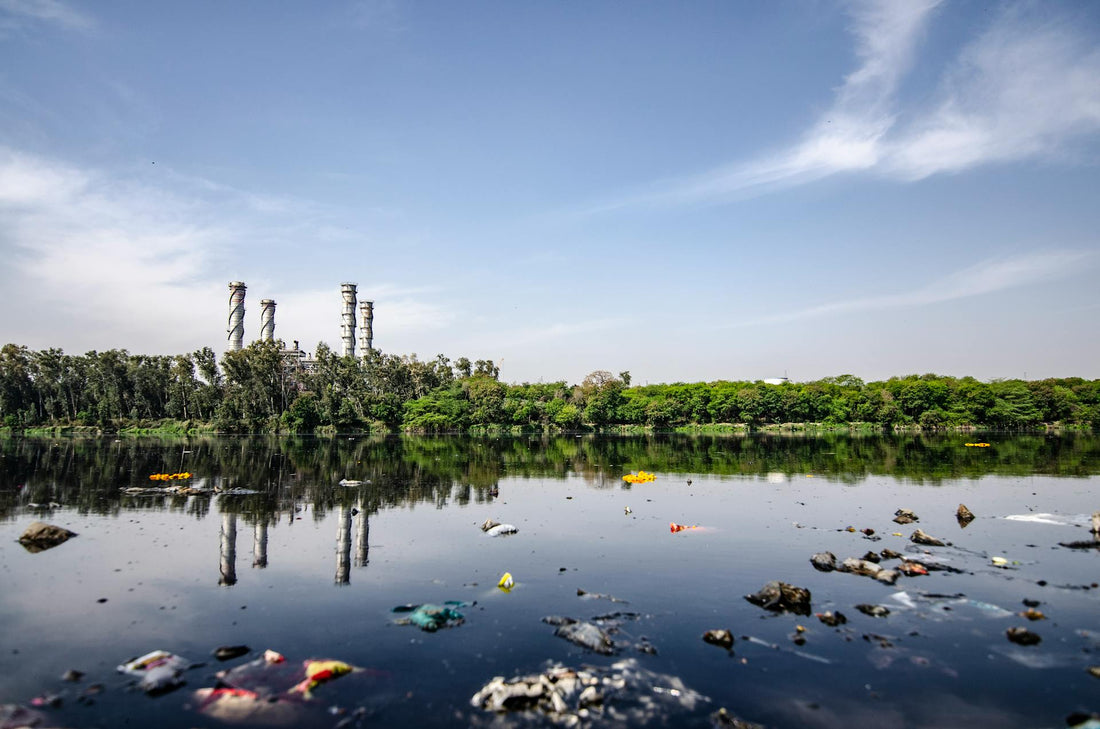
The Environmental Impact of Fast Fashion
Share
Fast fashion has revolutionized the way we shop, offering trendy clothing at low prices and encouraging a throwaway culture. However, this convenience comes at a significant environmental cost. At YAWL, a sustainable fashion brand, we believe it's crucial to shed light on the environmental consequences of fast fashion and promote more sustainable alternatives. In this blog post, we'll explore the environmental impact of fast fashion, backed by statistics and case studies, and suggest ways to adopt more eco-friendly practices.
The Environmental Consequences of Fast Fashion
1. Water Consumption and Pollution
Water Usage
The fashion industry is one of the largest consumers of water. It takes approximately 2,700 liters of water to produce a single cotton t-shirt, which is enough water for one person to drink for 2.5 years. The excessive water usage in fast fashion is unsustainable, especially in regions already facing water scarcity.

Water Pollution
Textile dyeing is the second-largest polluter of clean water globally, after agriculture. Toxic chemicals used in dyeing processes are often discharged into rivers and waterways, contaminating drinking water and harming aquatic life. For instance, the Citarum River in Indonesia, one of the most polluted rivers in the world, suffers heavily from the untreated waste dumped by numerous textile factories.
2. Carbon Emissions
The fast fashion industry contributes significantly to global carbon emissions. The production and transportation of textiles account for about 10% of the world's total carbon emissions. To put this in perspective, the fashion industry's carbon footprint is larger than the aviation and shipping industries combined.
3. Waste Generation
Fast fashion encourages a throwaway culture, leading to massive amounts of textile waste. In the UK alone, an estimated 300,000 tonnes of clothing ends up in landfills each year. Globally, 85% of all textiles go to the dump each year, which is equivalent to a garbage truck full of clothes being dumped every second.

4. Microplastic Pollution
Many fast fashion garments are made from synthetic fibers like polyester, which shed microplastics during washing. These tiny plastic particles make their way into oceans, contributing to the growing problem of marine plastic pollution. It's estimated that half a million tonnes of microplastics are released into the ocean each year from washing synthetic clothes.
Sustainable Alternatives
1. Slow Fashion
Slow fashion emphasizes quality over quantity, promoting the production of fewer, but higher-quality garments that are made to last. By investing in timeless pieces and reducing the frequency of purchases, consumers can significantly lower their environmental footprint.
2. Ethical Sourcing
Choosing brands that prioritize ethical sourcing of materials is crucial. At YAWL, we use organic cotton, bamboo, and recycled polyester, which have a lower environmental impact compared to conventional materials. These materials are sourced sustainably, ensuring minimal harm to the environment.
3. Circular Fashion
Circular fashion focuses on creating a closed-loop system where garments are designed, produced, and disposed of in a way that allows them to be reused, recycled, or composted. This approach reduces waste and promotes the continual use of resources.
4. Second-Hand and Upcycled Fashion
Buying second-hand clothing or upcycling old garments are excellent ways to reduce waste and minimize the demand for new clothing production. Thrift stores, consignment shops, and online platforms like Depop and Poshmark offer stylish, pre-loved clothing options.
5. Conscious Consumerism
Consumers have the power to drive change by making informed purchasing decisions. Supporting sustainable brands, reducing overconsumption, and advocating for transparent supply chains can collectively push the fashion industry towards more sustainable practices.
Conclusion
The environmental impact of fast fashion is profound and far-reaching, affecting water resources, carbon emissions, waste generation, and marine life. By understanding these consequences and embracing sustainable alternatives, we can mitigate the damage and move towards a more sustainable fashion industry. At YAWL, we are committed to promoting eco-friendly practices and offering stylish, sustainable alternatives. Join us in making a positive impact on the planet, one garment at a time.


